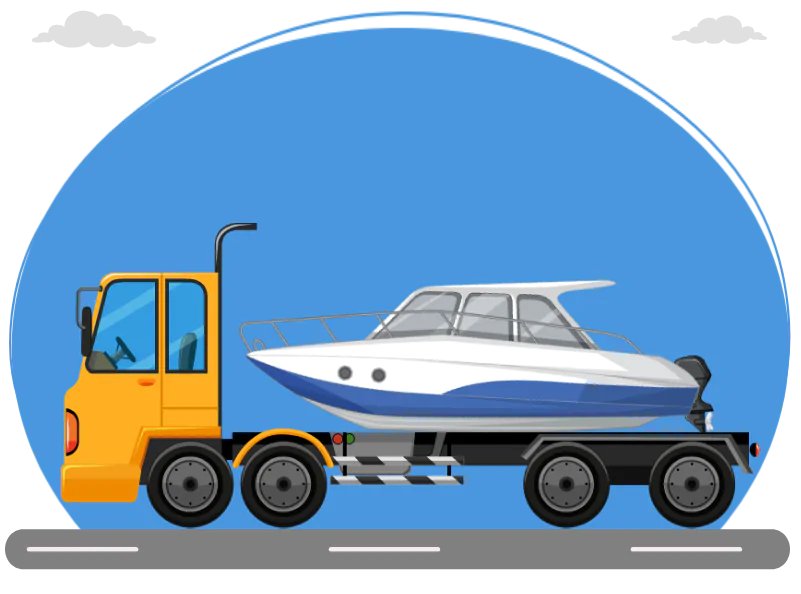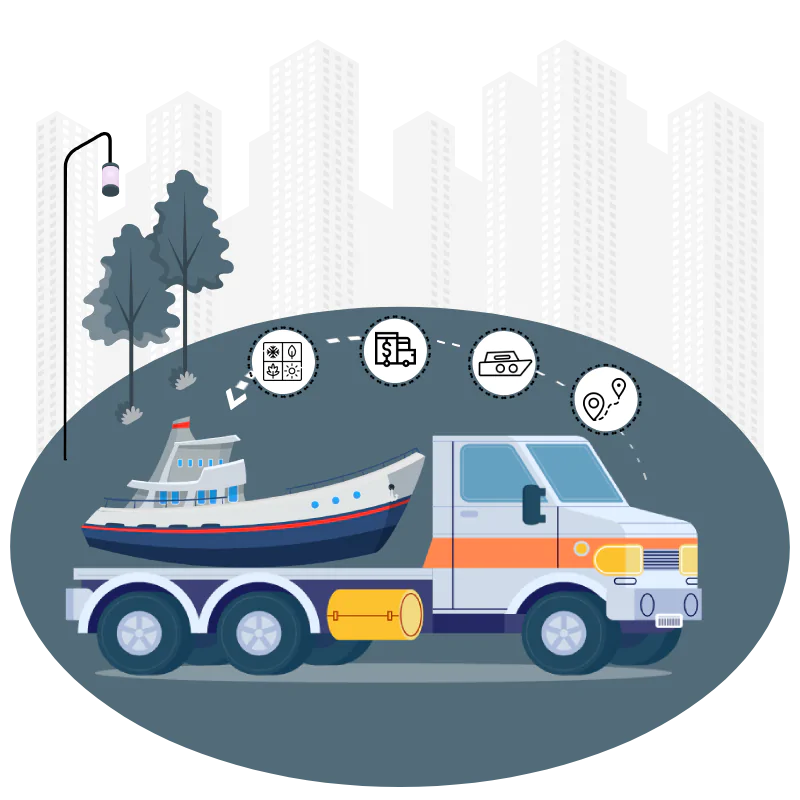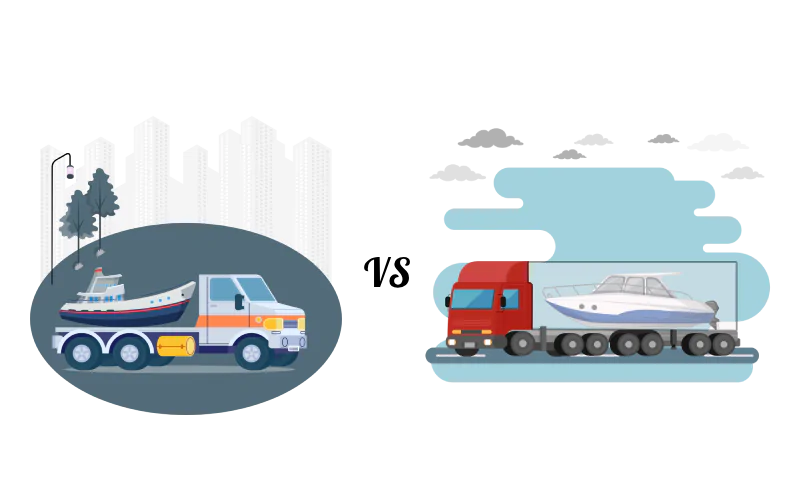Boat Transport & Shipping
Need help shipping a boat to its new destination? We are boat moving experts.
Types of Boats We Ship
- Jet Skis
- Yachts
- Houseboats
- Personal watercraft
- Sailboats
- Powerboats
- Fishing boats
- Pontoon boats


How much does it cost to transport a boat?
On average, boat shipping costs can range from $500 to $5,000 or more for longer distances and larger vessels. The cost of boat delivery can vary depending on several factors, such as the size and type of the boat, the distance of transportation, the transport method (open or enclosed), and any additional services required. Here are some estimated boat transportation costs between popular city pairs within the United States:
- Miami, FL to Fort Lauderdale, FL: Approximately $500 – $800
- Los Angeles, CA to San Diego, CA: Approximately $600 – $1,000
- New York City, NY to Boston, MA: Approximately $800 – $1,200
- Seattle, WA to Portland, OR: Approximately $700 – $1,000
- Houston, TX to New Orleans, LA: Approximately $600 – $1,000
Factors that Affect the Cost of Boat Shipping
- Distance: The distance between the pickup and delivery locations plays a significant role in determining the cost. Longer distances typically result in higher shipping expenses.
- Boat Size and Type: Larger and heavier boats require more specialized equipment and handling, which can increase the shipping cost.
- Transport Method: The choice between open or enclosed transport can impact the price. Enclosed transport provides extra protection but tends to be more expensive than open transport.
- Additional Services: Services such as door-to-door delivery, expedited shipping, or insurance coverage may add to the overall cost.
- Seasonality: High-demand periods, such as peak boating season or holiday periods, can affect shipping rates.


Boat Shipping Methods
- Open Transport: This is the most common and cost-effective method. The boat is loaded onto an open trailer or carrier exposed to the elements during transit. While it is a safe option for most boats, it may not be ideal for valuable or delicate vessels.
- Enclosed Transport: In this method, the boat is transported within a fully enclosed trailer, providing protection from weather conditions and road debris. Enclosed transport is recommended for high-value boats, luxury yachts, or when added protection is necessary.
Prepare Your Boat for Transport
If it’s your first time transporting a boat, here are a few things you should know in order to properly prepare your boat for transport:
- All boats and vessels must have their own hauling trailers – Make sure that your boat is properly secured to the trailer.
- Provide the boat shipping company with your boat’s specs and information in advance – Make sure your boat’s measurements and weight are accurate. Remember, transport companies are allocating space for your boat according to the information given to them.
- Remove all personal and prohibited items from your vessel – Any breakable items should be stored in a safe place. It’s very important to secure anything that is loose and extends beyond the hull. Tape interior cabinet doors shut. Close and secure cabin doors, windows and any other doors. Tape hatches to avoid leaks and water damage.
- Empty all fuel and water tanks as much as possible – Leave enough fuel to get to and from the transport ship. Make sure there is no water in the bilge. Remove drain plugs from the hull and anchors from the deck. Flush and sanitize your tanks with a chlorine bleach solution.
- Disconnect your battery – Store cables to ensure you don’t have a dead battery at delivery.
- Protect your entire boat with shrink wrap – Apply shrink wrap to the most vulnerable areas such as teak and non-skid surfaces if boat is too large. If shrink wrap comes apart during transport, it will be removed to avoid damage from beating against the boat. The carrier transporting your boat will not be held responsible. Apply an insulator wax or cover all stainless steel, chrome fittings, and exposed metal.
- Remove canvas covers – Covers tend to flap in the wind, damaging the boat. The carrier transporting your boat will not be held responsible if cover is not removed.
- Inspect your boat for any existing damages – Document and take pictures of the set up of any parts that were dismantled for size requirements. Also, take pictures of the location of items that were stored to prevent them from getting damaged. Driver will conduct a detailed inspection of your boat at pick-up and at delivery as well.
- Make sure you have all necessary paperwork
- Do not forget your keys!
Frequently Asked Questions
Absolutely! AutoStar Transport Express, one of the best boat moving companies can handle boats of various sizes and types, from small personal watercraft to large yachts. We have the expertise, equipment, and network of carriers to accommodate a wide range of boat transport needs, ensuring a safe and reliable journey for your watercraft.
The duration of boat transport can vary depending on factors such as the distance, route, and any specific requirements. In general, local or short-distance transport may take a few days, while long-distance shipping can take up to a few weeks.
Absolutely! AutoStar Transport Express, one of the top-rated boat transport companies employs specialized equipment and secure tie-down methods to ensure that your boat remains stable and protected throughout the transportation process. Our team of experienced boat movers (drivers and carriers) takes every precaution to safeguard your boat from any potential damage during transit.
The Jet ski shipping costs between $200 to $2,000. Get a free quote from AutoStar Transport Express to get an exact estimate.

